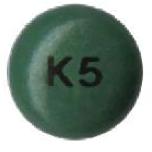Dexbrompheniramine/pseudoephedrine Interactions
There are 491 drugs known to interact with dexbrompheniramine/pseudoephedrine, along with 10 disease interactions, and 1 alcohol/food interaction. Of the total drug interactions, 31 are major, 453 are moderate, and 7 are minor.
- View all 491 medications that may interact with dexbrompheniramine/pseudoephedrine
- View dexbrompheniramine/pseudoephedrine alcohol/food interactions (1)
- View dexbrompheniramine/pseudoephedrine disease interactions (10)
Most frequently checked interactions
View interaction reports for dexbrompheniramine / pseudoephedrine and the medicines listed below.
Dexbrompheniramine/pseudoephedrine alcohol/food interactions
There is 1 alcohol/food interaction with dexbrompheniramine / pseudoephedrine.
Dexbrompheniramine/pseudoephedrine disease interactions
There are 10 disease interactions with dexbrompheniramine / pseudoephedrine which include:
- cardiovascular disease
- anticholinergic effects
- asthma/COPD
- cardiovascular
- renal/liver disease
- GI narrowing
- PKU
- BPH
- diabetes
- glaucoma
More about dexbrompheniramine / pseudoephedrine
- dexbrompheniramine/pseudoephedrine consumer information
- Compare alternatives
- Reviews (62)
- Drug images
- Side effects
- Drug class: upper respiratory combinations
- En español
Related treatment guides
Drug Interaction Classification
| Highly clinically significant. Avoid combinations; the risk of the interaction outweighs the benefit. | |
| Moderately clinically significant. Usually avoid combinations; use it only under special circumstances. | |
| Minimally clinically significant. Minimize risk; assess risk and consider an alternative drug, take steps to circumvent the interaction risk and/or institute a monitoring plan. | |
| No interaction information available. |
See also:
Further information
Always consult your healthcare provider to ensure the information displayed on this page applies to your personal circumstances.


